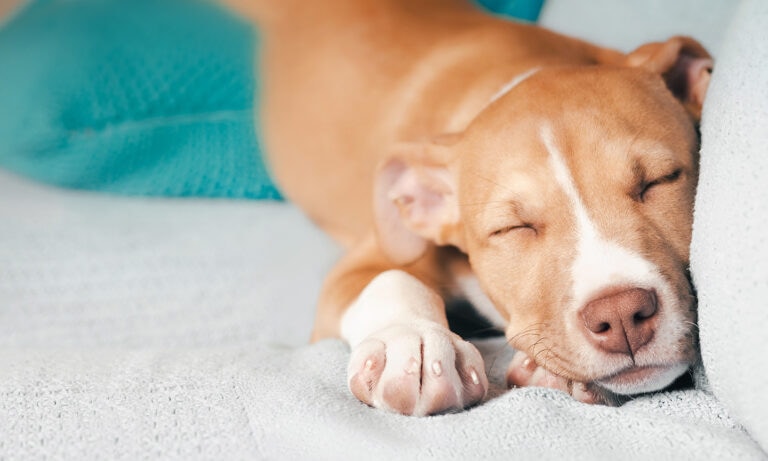The Chinese Shar-Pei is not a dog breed without health problems. Fortunately, dedicated Chinese Shar-Pei breeders have done their best to eradicate problems that have occurred in this dog breed and their efforts have paid dividends.
Swollen Hock Syndrome
Swollen hock syndrome is of particular concern with the Chinese Shar-Pei. Swollen hock syndrome can also be known as familial Shar-Pei fever and systemic amyloidosis.
Although a Chinese Shar-Pei may show no signs of the disorder, he can be carrying it genetically, so two dogs mated together, both with the defective genes, can produce Shar Pei puppies that either have or carry the syndrome.
Swollen hock syndrome is caused by inability to break down and remove amyloid protein. Instead this protein builds up, eventually taking all life out of the dog’s kidneys and liver. In consequence, Chinese Shar-Pei that are so affected die at an early age from either liver or kidney failure.
Symptoms of swollen hock syndrome are lethargy, poor appetite and sometimes a high temperature, combined with shivering. The Chinese Shar-Pei’s large muzzle may also be swollen and the eyes puffed up, symptoms similar to a wasp sting. Your Shar-Pei may scream in pain when the muzzle is touched. The joints can be stiff and your dog may have difficulty in placing either or both of his hind legs on the ground. The back legs can become swollen and thickened. Yet another sign in Shar-Pei puppies that are affected is a roached back, due to abdominal pain. The Shar-Pei puppy may also vomit and have diarrhea.
Attacks occur with varied frequency. An affected Chinese Shar-Pei might have an attack virtually every week, or may have only a couple and then never again. However, even if the attacks are few, the cause must be thoroughly investigated and if the reason is swollen hock syndrome, the Shar-Pei must never be bred.
The usual age at which swollen hock syndrome affects Shar-Pei is between 4 and 18 months, but it has been known earlier, and other dogs have shown no sign until adulthood.
To alleviate the discomfort as much as possible, your Chinese Shar-Pei’s temperature must be kept normal. You can wash behind the ears and your dog should be kept in a cool, quiet room. Your Shar-Pei should not be forced to eat food, but drinks of honey water are good.
Keeping an affected Chinese Shar-Pei on a low-protein diet (16 to 20 percent) is beneficial, and natural sulfur can help to purify the system. Fresh parsley can help the kidneys.
Tight Lip
In cases when the padding on the lower lip of a Shar-Pei is excessive, the lower lip can roll upward and then over the lower teeth. This makes it virtually impossible to expose the bite and causes two problems. There is the obvious discomfort suffered by the Shar-Pei when chewing food, and in time the pressure placed on the lower teeth can push them backward, creating an overshot bite. Corrective surgery can help them to live more comfortable lives. Such dogs should never be bred.
Ear Infection
Because the Shar-Pei’s ears and ear canals are small, bacteria are quite likely to build up and cause infection. Check your dog regularly for any sign of a waxy build-up or unpleasant odor. Ear-cleaning dog supplies are readily available, but one must never probe inside the dog’s ear. An affected ear causes substantial discomfort, often with the head being constantly shaken and, in bad cases, held at an angle.
Loose Skin Problems
The Chinese Shar-Pei is a dog breed that has a tendency to suffer from skin problems, caused in part by the wrinkled skin. A Shar-Pei can also be sore between the toes and inside the pads of the feet. Use of a medicated powder will help, and your Shar-Pei should be kept away from damp surfaces. Your dog should be prevented from chewing or licking at his feet, something that can sometimes happen as a result of boredom.
Shar-Pei Rash
Shar-Pei rash is sometimes also called Shar-Pei syndrome. The dog’s skin becomes red and inflamed, and hair loss occurs in patches, giving a rather “moth-eaten” appearance. It is believed that this may be due to the Shar-Pei’s own prickly hair irritating his skin. Occasionally hair loss can affect the entire body, but unfortunately the symptoms do not respond well to treatment.
Mucinosis
Mucinosis is manifested by lumps and bumps on the dog’s skin, as well as possible discharge, caused by a mucus-like secretion forming under the skin. Chinese Shar-Pei tend to have more mucin than other dogs, accounting in part for this dog breed’s plentiful wrinkles. Mucinosis is not a health concern, per se, though it does affect the appearance of the Shar-Pei. If your dog develops an infection from mucinosis, antibiotics for dogs can be helpful.
Rectal Prolapse
Rectal prolapse should never be confused with an anal abscess. This does occasionally happen in the Chinese Shar-Pei, the prolapse occurring as an inflamed mass protruding from the anus. Blood may also be evident. There can be a number of different reasons for such prolapse, and veterinary attention should be sought urgently.
Immune Deficiency
Some Chinese Shar-Pei lines carry immune deficiency, in which the immune system is depressed, though this sometimes seems to recover of its own accord as a Shar-Pei puppy matures. This is frequently detected by a puppy having a high fever, with no apparent reason. There can be serious health problems in severe cases, and Shar-Pei so affected tend to be susceptible to demodectic mange.
Excerpt from Chinese Shar-Pei, part of the Comprehensive Owner’s Guide series, with permission from its publisher, Kennel Club Books, a division of BowTie Inc. Purchase Chinese Shar-Pei here.
Featured Image: iStock.com/Weekend Images Inc.
Share:










